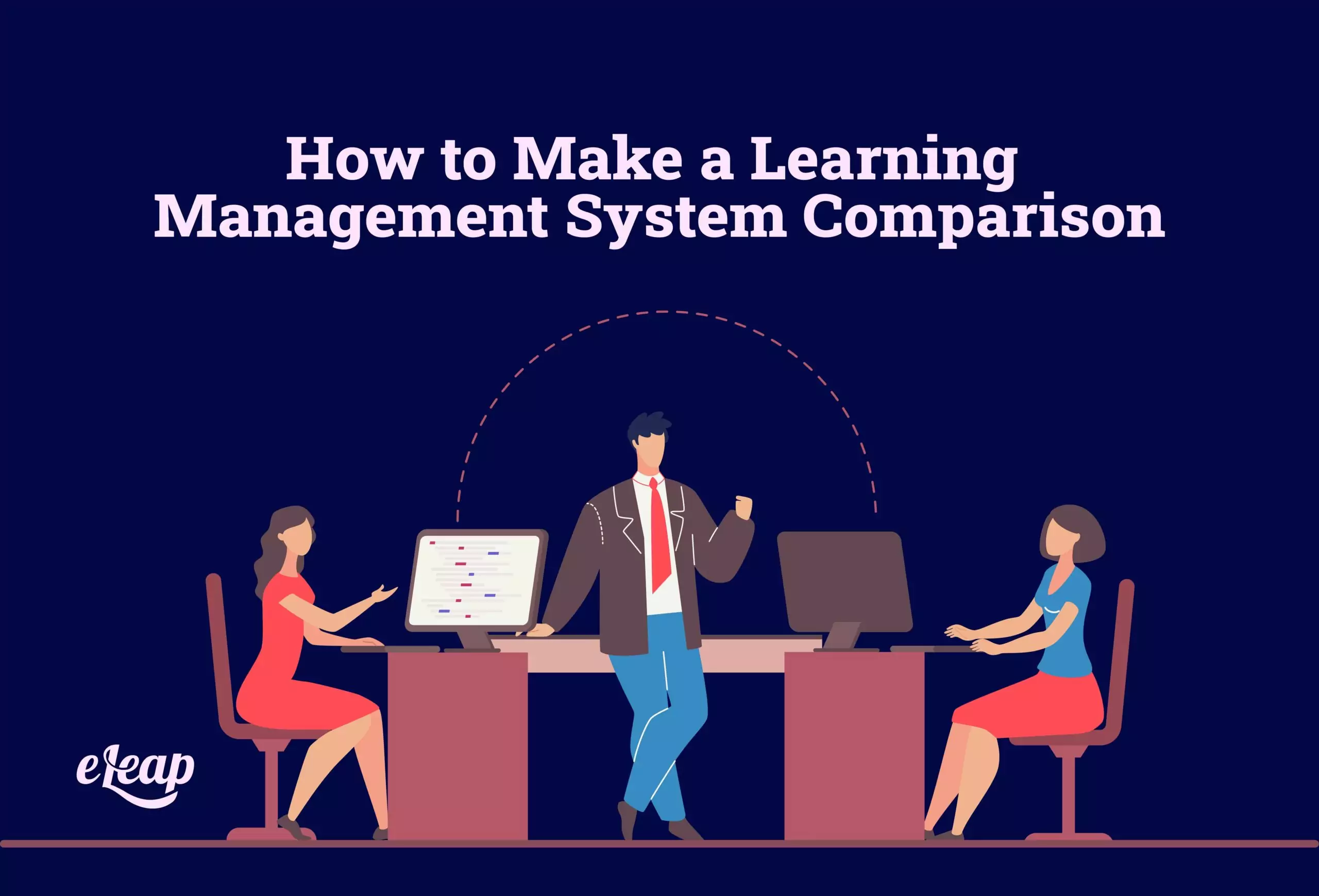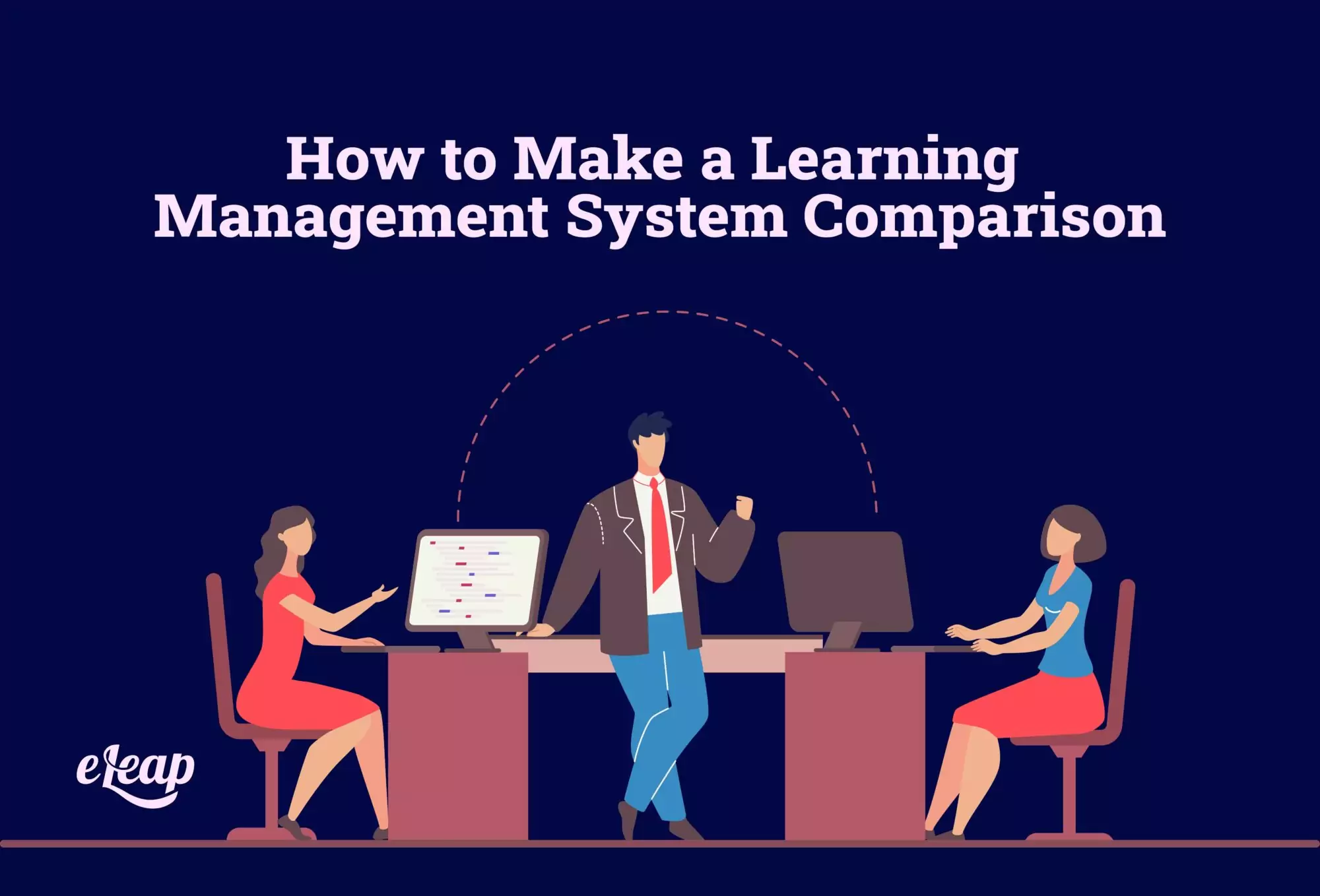How to Make a Learning Management System Comparison

When you’re in the market for a new learning management system, several important steps must be taken to ensure that you’re making the best possible decision. Ensuring that the software you choose will accommodate your team in the most critical areas is vital for long-term engagement, efficient learning, and even promoting a collaborative learning environment.
However, before you can select the LMS platform that fits into your future, you must first narrow the choices down to a select final candidate. These candidates should consist of platforms that only contain the most relevant modules for your learners.
The last thing you want is to spend money on a platform containing material you don’t need or content that doesn’t promote efficient learning around the office.
If you have a decision like this coming up soon, or you’re thinking about upgrading your current LMS, this article could be a lifesaver. In the following section, you’ll find out how to make the most efficient comparison between learning management systems.

LMS Comparison
Have you ever wondered how to make an LMS comparison? There are so many different types on the market, and choosing the one that aligns with your organization’s learning strategy can be difficult. You also need to keep your budget in mind.
A quality LMS platform can take a huge portion out of your company’s training budget. This is why you want to be sure you’re getting the most bang for your buck. Getting a respectable ROI is possible by comparing properly before building and deploying your new LMS platform.
Are you curious about how to make a learning management system comparison? Many learning management systems are on the market today, and it can be hard to choose one. Also, an LMS isn’t free. It takes a bite out of the company budget. It’s wise to ensure you will receive a good ROI on your learning management system investment before you make it. You can ensure a worthy ROI by comparing a learning management system with others before implementing your final choice.
How to Properly Make a Comparison
Learning management systems have so many features for comparison that the steps involved can be overwhelming. However, you can efficiently outline the process in four easy steps.
These steps include:
- The LMS research phase
- The comparison phase
- The implementation phase
- The launching phase
The Research Phase
First, managers and other company leaders should be conducting the research. Most likely, these will be the administrators of the platform, so management needs to have a solid idea of how the platform operates.
You should take your time during the research phase. Trust us when we tell you this isn’t a part of the process that you want to rush through. It can be tempting to choose the first platform you research. These programs are very impressive, and it’s easy to get mesmerized by the first offering.
Just remember, the subsequent options may be even more impressive or at least have other features that could be more useful to you and your team.
Making the Comparison
The second step during this process is probably the most critical of all four phases. You’ll probably find that this step takes the most time, but it doesn’t have to be stressful if you understand how to complete it.
When you make a system comparison, you should first decide what your goal is for your LMS. Do you want your LMS to be for training purposes? Do you want a system that allows your team to work remotely? Maybe you want to increase elements of social learning around your workplace. You should be as specific as possible when outlining the goal for your LMS.
Once you’ve figured out your goal for your LMS, you need to make a list of characteristics you need the system to have in place. Which add-ons could your organization use the most? Here are a few common features that normally come standard:
- Mobile learning
- Social and collaborative learning tools
- eLearning content library
- Language localization
- eCommerce tools
- Integrations
- Reporting tools
- Interoperability for learning tools
- Learning paths
- Integrated salesforce
SCORM Certified
When you choose the number one feature that would take your company’s learning strategy over the top, you need to keep the needs of this feature in mind. For example, if your team is multicultural, you need options for language localization.
If you don’t have someone on your team that knows how to create online content, get a system that features a content library so you have a reliable source. When employee satisfaction is something you’re highlighting, you should choose an LMS with collaborative learning tools.
The main goal is to ensure your LMS has a mobile learning option and is certified in SCORM.
When you understand the features that your company requires, you’ll be ready to make the official comparison. All of the heavy lifting has been done, so the rest is easy. The first thing you want to do is get rid of any options that don’t have the features you need.
You can actually get an idea of how they operate for the remaining options by requesting a demo version of each different platform. After you’ve taken advantage of the trial copies, you want to analyze the pricing of each different software.
Your budget will end up being a huge influence on your final decision. Just keep this last piece of advice in mind:
Choose a system that doesn’t have fees for each user. These platforms may seem cost-efficient, but if there is a cap on how many users you can add, this means you’ll need to pay for additional access. You can probably imagine what this can do to your budget.
After you’ve narrowed everything down, you can probably make the final decision based on who provides the best customer service. At this point, you should have a platform that meets your needs, is cost-effective, and allows you to meet your goals.
Now, you just need to make sure that someone is available at all times if you have concerns. When you hit a roadblock, you don’t have time to wait for a callback. After all, you put hard work into developing your platform and paid good money to do it; poor customer service can ruin the entire experience.
Taking all of these elements into consideration will eliminate the stress of comparing different platforms. After it’s all said and done, you should end up with a right learning management system that boosts engagement and helps team members grow individually and in a way that promotes the overall growth of the entire team.